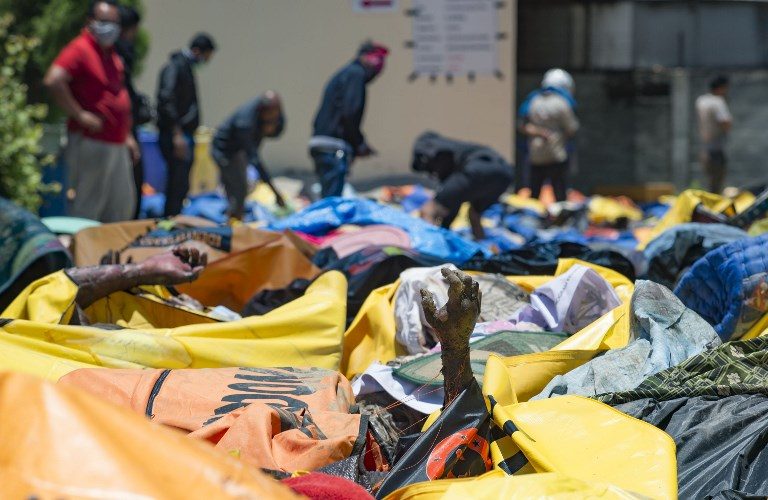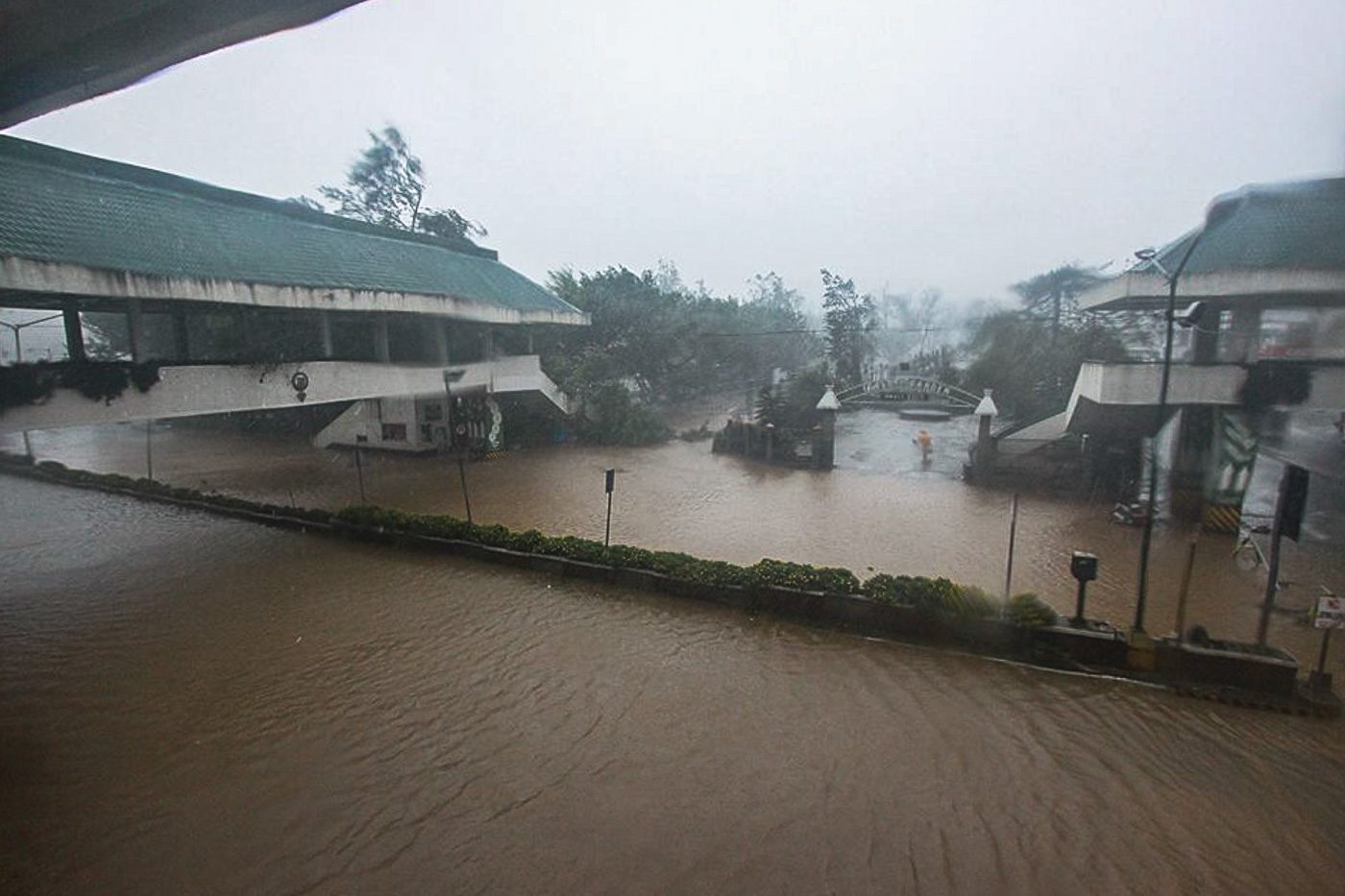SUMMARY
This is AI generated summarization, which may have errors. For context, always refer to the full article.

MANILA, Philippines– The catastrophic damage left behind by the 7.5-magnitude earthquake and subsequent tsunami in Palu, Indonesia still leaves people shaken to their very core.
According to the United Nations High Commissioner for Refugees (UNHCR), the death toll reached 2,100 as of October 15. About 79,000 are left displaced in various sites, and over 68,000 houses were destroyed.
Two weeks after the disaster, Indonesia called off the grim search for those killed in the quake-tsunami, ending hopes to retrieve around 5,000 bodies believed to still be buried.
The horrifying aftermath has put disaster mitigation and preparedness into the spotlight. There are different factors needed to understand the gravity of the situation. For Indonesia, a combination of plate tectonics in the region, the shape of the coastline, vulnerable communities and a less-than-robust early warning system explains why Indonesian tsunamis are especially dangerous.
Aside from both being vast archipelagos, the Philippines and Indonesia have more in common than people think. They’re both prone to natural hazards.
Just like Indonesia, the Philippines has a big earthquake looming in its future. Dubbed “The Big One”, a worst case scenario of a 7.2-magnitude earthquake is expected to happen in various parts of Metro Manila and nearby provinces when the West Valley Fault moves. Experts say this may happen in our lifetime.
This raises a particularly important question: what makes the Philippines and Indonesia prone to natural hazards?
In Indonesia
The country covers many complex tectonic environments. For example, Eastern Indonesia has many small microplates, which are jostled around by the motion of the large Australia, Sunda, Pacific and Philippine Sea plates.
This also means it could bring tsunamis when earthquakes are especially strong. A tsunami is a series of sea waves commonly generated by under-the-sea earthquakes, with heights that could be greater than 5 meters. (READ: Tsunami 101: What you need to know about tsunamis)
The coastlines of the Indonesian archipelago are also accentuated, especially in its eastern parts. Depth and shape of the seafloor are important factors to consider for tsunamis. Palu, where the deadly quake-tsunami occurred, may experience more intense and deadly tsunamis because it has a narrow, deep and long bay. The complex configuration of the country makes it difficult to model potential tsunamis as basis for warnings to areas that may possibly be affected.
Indonesia’s tsunami warning system operates a network of 134 tidal gauge stations, 22 buoys connected to seafloor sensors to transmit advance warnings, land-based seismographs, sirens in about 55 locations, and a system to disseminate warnings by text message.
For those living in coastal areas, there’s one other tricky problem. Because of its wide variety of languages and lack of communications infrastructure, making sophisticated and efficient early warning systems that can easily be understood by all is very important. The financing of these systems in the long-term becomes a heavy challenge though when the 3 major Indonesian agencies responsible for disaster mitigation suffered from budget cuts and internal struggles to define roles and responsibilities.
In the Philippines
Our home country is in a tricky place as well. It rests in the Pacific Typhoon Belt and Pacific’s earthquake and volcano Ring of Fire. Besides the risk of volcanic eruptions, earthquakes, and floods, the Philippines faces an average of 20 typhoons in a year.
Typhoon Ompong was the strongest so far in 2018, causing a death toll of at least 95.

Aside from its geographic location, the Philippines is prone to natural hazards due to poor institutional and societal capacity to manage, respond, and recover from natural hazard events.
Recently, it saw twin tragedies happen within a week when major landslides hit Itogon in Benguet and Naga in Cebu. Both local governments warned vulnerable households in their areas to evacuate.
Unfortunately, the mining community in Itogon shooed them away, thinking their bunkhouse would be a sufficient evacuation area from their past area. Though a forced evacuation could have been done, signs of an imminent landslide were not as apparent in the area. In Naga, Cebu, not all heeded the call to evacuate, even when Naga government employees and representatives of a quarrying company that used the area as its site reportedly asked residents to flee.

This only shows the need of community-based preparations and capacity development intervention, especially for those in coastal areas and other vulnerable areas. An awareness of risks and hazards, coupled with a strong partnership with the government, can prevent people from ignoring warnings.
It also shows the importance of livelihood options especially for those in vulnerable areas. Since the landslide, Itogon locals have been left wondering what they could do as their livelihood since the government immediately stopped mining and quarrying in the area.
In terms of possible tsunamis, the Philippines has warning systems that are regularly maintained. Phivolcs has created a tsunami scenario database with more than 30,000 scenarios they expect could happen once a tsunami hits the country. (READ: How are PH tsunami warning systems maintained)
More to be done
While there’s more to be done to be better prepared for disasters, there are ways we can help each other out. For example, UNHCR is accepting donations
Following the Palu quake-tsunami, life-saving aid is direly needed for affected families in Indonesia. Many organizations are making efforts to bring relief. UNHCR, for example, is accepting donations.
Everyone can help out by giving support monthly or as a one-off gift:
MONTHLY
-
PHP 1000/mo – Can provide a family tent to serve as an emergency shelter
-
PHP 800/mo – Can give vital humanitarian assistance and core relief items (mattresses, blankets, kitchen sets, and portable solar lamps)
-
PHP 600/mo – Can provide assistance to the most vulnerable, especially unaccompanied children, the elderly, the disabled, and other vulnerable people
ONE-OFF
-
PHP 10,000 – Can provide a family tent to serve as an emergency shelter
-
PHP 5,000 – Can give vital humanitarian assistance and core relief items (mattresses, blankets, kitchen sets, and portable solar lamps)
-
PHP 3,000 – Can provide assistance to the most vulnerable, especially unaccompanied children, the elderly, the disabled, and other vulnerable people
There are several ways to donate:
1) CREDIT CARD
To donate online, donors can log on to this site.
2) BANK DEPOSIT
Filipinos can donate via bank deposit, UNHCR’s account details are found below:
- Banco de Oro Savings Account
Account Name: United Nations High Commissioner for Refugees
Account Number: 5340 0674 68
- Bank of the Philippine Islands Savings Account
Account Name: UN High Commissioner for Refugees
Account Number: 2973 0059 98
- Metrobank Savings Account
Account Name: United Nations High Commissioner for Refugees
Account Number: 607 3607 1309 90
For tracking and recording, donors are requested to send a scanned copy or photo of the bank deposit slip to UNHCR’s email address phimapsfr@unhcr.org.
3) TELEPHONE
Donors may also make their donations via call, provided that they have a valid credit card. They may call the UNHCR Donor Care hotline at +63 (02) 817-2398 loc. 2144.
4) EMAIL
Donors may also send UNHCR an email to phimapsfr@unhcr.org with their names, address, contact details, birthdate, credit card details, and donation amount.
– Rappler.com
Add a comment
How does this make you feel?
There are no comments yet. Add your comment to start the conversation.